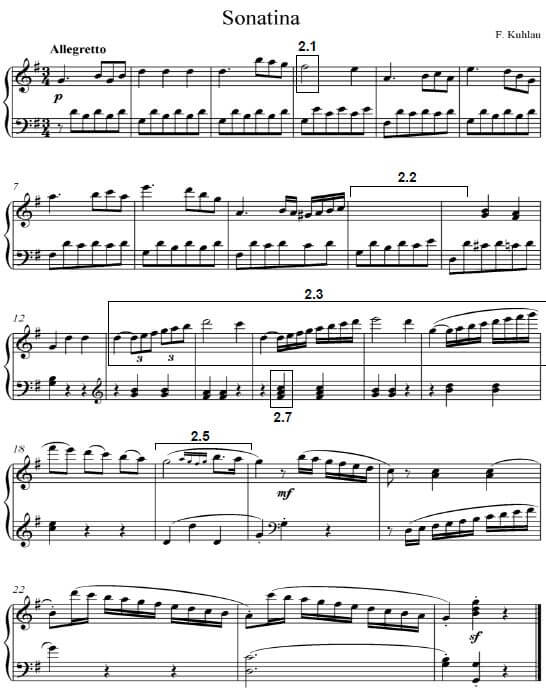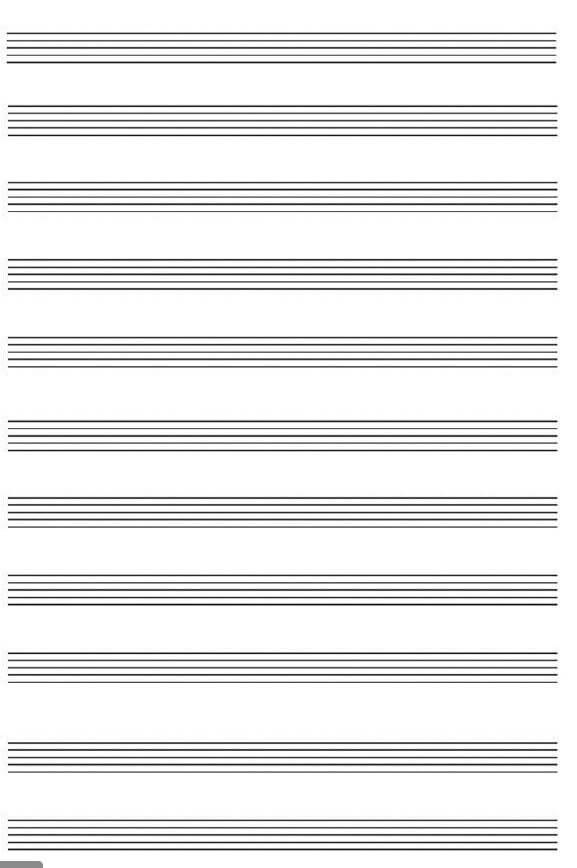MUSIC GRADE 12 PAPER 2 QUESTIONS - NSC PAST PAPERS AND MEMOS SEPTEMBER 2017
Share via Whatsapp Join our WhatsApp Group Join our Telegram GroupMUSIC
GRADE 12
PAPER 2
NSC PAST PAPERS AND MEMOS
SEPTEMBER 2017
INSTRUCTIONS AND INFORMATION
- This question paper consists of THREE sections:
SECTION A (Aural) (10)
SECTION B (Recognition) (12)
SECTION C (Form) (8) - QUESTION 1, QUESTION 2, QUESTION 3 and QUESTION 7 are COMPULSORY.
- Answer QUESTION 4 (WESTERN ART MUSIC – WAM) OR QUESTION 5 (JAZZ) OR QUESTION 6 (INDIGENOUS AFRICAN MUSIC – IAM).
- Candidates must write their answers on this question paper. Use a pencil for music notation and blue or black ink for the other answers.
- This examination will be written while candidates listen to a CD.
- The music teacher at the centre must conduct the examination in the presence of the invigilator.
- The last page of the question paper is manuscript paper intended for rough work. The candidate MAY NOT remove this page.
- Candidates may NOT have access to any musical instrument for the duration of this examination.
- Candidates must take note of the mark allocation at each question to provide enough information in their answers.
- Write neatly and legibly.
INSTRUCTIONS TO THE PERSON OPERATING THE SOUND EQUIPMENT
|
MARKING GRID
SECTION A: AURAL | TOTAL | MARKER | MODERATOR |
QUESTION 1 (COMPULSORY) | 4 | ||
QUESTION 2 (COMPULSORY) | 6 | ||
SUBTOTAL | 10 |
SECTION B: RECOGNITION | TOTAL | MARKER | MODERATOR |
QUESTION 3 (COMPULSORY) | 4 | ||
AND | |||
QUESTION 4 (WAM) | 8 | ||
OR | |||
QUESTION 5 (JAZZ) | 8 | ||
OR | |||
QUESTION 6 (IAM) | 8 | ||
SUBTOTAL | 12 | ||
SECTION C: FORM | TOTAL | MARKER | MODERATOR |
QUESTION 7 (COMPULSORY) | 8 | ||
SUBTOTAL | 8 | ||
| GRAND TOTAL | 30 |
QUESTIONS
SECTION A: AURAL
QUESTION 1 (COMPULSORY)
Play Track 1 FOUR times. Pause for 30 seconds after each repetition.
1.1 Listen to the melodic and rhythmic phrase. Add the time signature. Notate only the rhythm of the missing notes in bars 2 and 3 below. [4]
QUESTION 2 (COMPULSORY)
Play Track 2 ONCE to provide a general overview.
Listen to the extract from the first movement of Sonatina by F. Kuhlau. Answer the questions that follow. 
| Play Track 3 ONCE. |
2.1 Identify the non-harmonic note at 2.1. (1)
| Play Track 4 FOUR times. Pause ONE minute between each repetition. |
2.2 Fill in the missing notation at 2.2. (3)
| Play Track 5 TWICE. |
2.3 Identify TWO compositional techniques used at 2.3. (2)
| Play Track 6 ONCE. |
2.4 What is the main key of this extract? (1)
2.5 Which symbol could have been used to replace the small printed notes at 2.5? Make a cross (X) in the appropriate block. ![]() (1)
(1)
2.6 Would you say that this extract is the concluding section of the Sonatina’s first movement or not? Give TWO reasons to motivate your answer. (3)
2.7 Identify the triad played by the left hand at 2.7, i.e. minor triad. (1)
(12 ÷ 2) [6]
TOTAL SECTION A: 10
SECTION B: RECOGNITION OF MUSIC CONCEPTS
QUESTION 3: GENERAL LISTENING (COMPULSORY)
Mark THREE items in COLUMN A in QUESTIONS 3.1–3.4 that relate to the music that you hear. Make a cross (X) in THREE appropriate blocks.
3.1
| Play Track 7 TWICE. |
COLUMN A | Track 7 |
Call and answer | |
Polyphonic texture | |
Allegretto | |
Jazz elements | |
Homophonic texture | |
Vivace |
(3)
3.2
| Play Track 8 TWICE. |
COLUMN A | Track 8 |
Tonal music | |
Complex harmonies | |
Acoustic guitar with orchestra | |
Atonal music | |
Simple chord progressions | |
Harp with orchestra |
(3)
3.3
| Play Track 9 TWICE. |
COLUMN A | Track 9 |
Idiophones | |
Polyrhythm | |
Male and female voices | |
Chordophones | |
Monophonic texture | |
Marabi |
(3)
3.4
| Play Track 10 TWICE. |
COLUMN A | Track 10 |
Polymetre | |
Terrace dynamics | |
Ladysmith Black Mambazo | |
A capella | |
Parallel intervals | |
Hexatonic scale |
(3)
(12 ÷ 3) [4]
Answer QUESTION 4 (WAM) OR QUESTION 5 (JAZZ) OR QUESTION 6 (IAM).
QUESTION 4: WAM
4.1
| Play Track 11 TWICE. |
4.1.1 Name the character and voice type of the vocalist in this extract.
Character:
Voice type: (2)
4.1.2 Provide this extract with a suitable title. (1)
4.1.3 Which term best describes the tempo of this extract?
Make a cross (X) in the appropriate block.
| Moderato | Adagio | Lustig | Alla Marcia |
(1)
4.1.4 With which style period do you associate this work? (1)
4.2
| Play Track 12 TWICE. |
4.2.1 Name the composer and genre associated with this extract.
Composer:
Genre: (2)
4.2.2 Identify the woodwind instrument playing the triplet figures at the beginning of this extract. (1)
| Play Track 13 TWICE. |
4.2.3 Mention TWO ways how tension is created in this extract. (2)
4.2.4 Which natural phenomenon is portrayed in this extract? (1)
4.3
| Play Track 14 TWICE. |
4.3.1 This extract includes the exclusive use of repetitions and sequences. Name ONE other compositional device used at the beginning of the extract. (1)
4.3.2 What is the time signature for this extract? Make a cross (X) in the appropriate block. (1)
6 8 | 3 4 | 5 4 | 4 4 |
| Play Track 14 ONCE more. |
4.3.3 Comment on the use of tonality in this extract. (3)
(16 ÷ 2) [8]
OR
QUESTION 5: JAZZ
5.1
| Play Track 15 TWICE. |
5.1.1 Identify the keyboard instrument that you hear in this extract. (1)
5.1.2 With which group do you associate this extract? (1)
5.1.3 Identify the South African jazz style. Make a cross (X) in the appropriate block. (1)
| Malombo-jazz | Kwela | Jazz in exile | Mbaqanga |
5.2
| Play Track 16 ONCE. |
5.2.1 Name TWO woodwind instruments used in this extract. (2)
| Play Track 16 TWICE again. |
5.2.2 Identify the South African jazz style. (1)
5.2.3 Give TWO reasons to motivate your answer in QUESTION 5.2.2. (2)
5.3
| Play Track 17 TWICE. |
5.3.1 Identify the chordophone and aerophone instrument playing the introduction of this extract.
Chordophone:
Aerophone: (2)
5.3.2 This jive style is known as Kwela. Give TWO alternative names for this style. (2)
5.4
| Play Track 18 TWICE. |
5.4.1 Name the female group performing this extract. (1)
5.4.2 Choose ONE word below that best describes the use of drum patterns in this extract. Make a cross (X) in the appropriate block. (1)
| Ostinato | Variations | Complex |
5.4.3 How is this style related to Indigenous African music? (2)
(16 ÷ 2) [8]
OR
QUESTION 6: IAM
6.1
| Play Track 19 TWICE. |
6.1.1 With which South African style do you associate this extract? (1)
6.1.2 Name the artist performing this extract. (1)
6.1.3 With which African tribe do you associate this type of music? Make a cross (X) in the appropriate block. (1)
| AmaSwazi | AmaXhosa | VhaVenda | Basotho |
6.2 Play Track 20 TWICE.
6.2.1 With which ONE of the following artists do you associate this extract? Make a cross (X) in the appropriate block. (1)
| Sello Galane | Lucky Ranku | Busi Mhlongo |
6.2.2 Name the style associated with the artist mentioned in QUESTION 6.2.1 above. (1)
6.2.3 Give ONE term that best describes the use of rhythms between the vocals and instruments in this extract. (1)
6.2.4 Except for the use of vocals, name any other TWO instruments that you hear in this extract. (2)
6.3
| Play Track 21 ONCE. |
6.3.1 Name the South African style and group associated with this extract.
Style:
Group: (2)
6.3.2 Which traditional dance influenced the basic rhythm for this song and style of music? (1)
| Play Track 21 ONCE again. |
6.3.3 Name TWO other South African styles that are fused in this particular style. (2)
6.4 Play Track 22 TWICE.
Mark THREE items in COLUMN A that is related to Track 22. Make a cross (X) in THREE appropriate blocks. (3)
COLUMN A | Track 22 |
Membranophone and chordopone | |
Performed by girls | |
Drinking song | |
Umngqokolo | |
Post-initiation song | |
Ndlamu dance | |
Ululation | |
Membranophone and idiophone |
(16 ÷ 2) [8]
TOTAL SECTION B: 12
SECTION C: FORM
QUESTION 7 (COMPULSORY)
| Play Track 23 ONCE to provide an overview. |
| Play Track 23 ONCE again. |
7.1 During which style period was this piece composed? (1)
7.2 Identify and name the form of this piece. (1)
7.3 Give a schematic analysis of the form mentioned in QUESTION 7.2 above. Use LETTERS only to indicate the different sections. (3)
7.4 Which term is used when the full orchestra is playing the main melody with the soloist? Make a cross (X) in the appropriate block. (1)
| Opus | Sotto Voce | Attacca | Tutti |
7.5 Is the bass line played legato or detached? (1)
7.6 Say whether the following statement is TRUE or FALSE.
There is no change in the tonality of this piece. (1)
| Play Track 23 ONCE more. |
TOTAL SECTION C: 8
GRAND TOTAL: 30
ROUGH WORK: